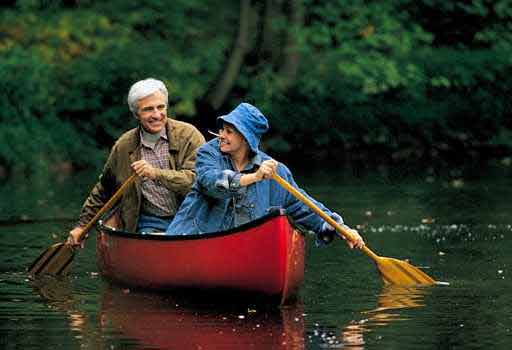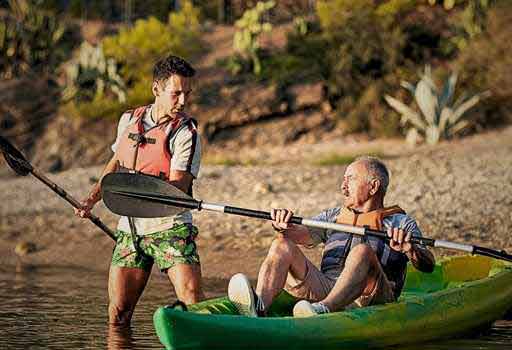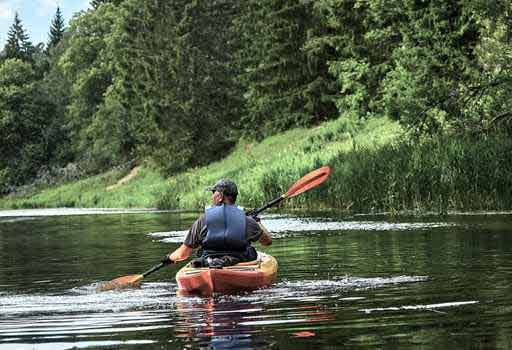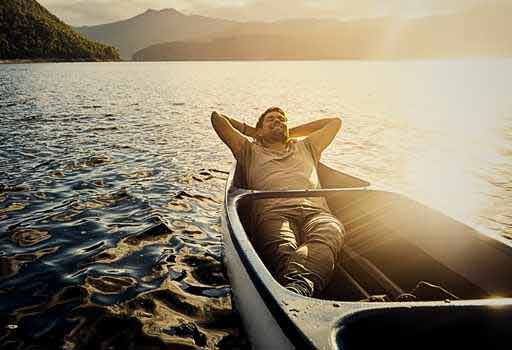Kayaking and canoeing are both popular water sports enjoyed by enthusiasts around the world. However, many people debate which is easier to use – kayak or canoe? While both have their advantages and disadvantages, several factors affect the ease of use of each watercraft.
Kayaks are often considered easier than canoes due to their lower center of gravity, more efficient paddling technique, increased maneuverability, and suitability for solo use.
In this article, we’ll explore four factors that determine which one is easier to use. It’s about seating position, paddling technique, maneuverability, and ease of use. The goal is to provide a comprehensive comparison between kayaks and canoes so you can decide which is easier for you.
Whatever your experience level, these factors can help you choose the right watercraft.
Which is Easier For Beginners, Kayak Or Canoe?
When it comes to water sports, two main vessels are often debated: kayaks and canoes. While both vessels offer a unique experience for their riders, it can be difficult for a beginner to know which one is the better option for them.
Kayaks are the more popular option for most people and are often seen as easier to learn. They are often shorter, lower to the water, and have a more stable base. This makes them easier to control and maneuver than canoes, as they are less likely to tip over. They also often come with a variety of features, such as adjustable seats and foot pedals, that make them more comfortable and customizable. In terms of portability, kayaks can be carried with relative ease and stored in tight spaces.
In contrast, canoes are longer and higher off the water, making them harder to maneuver. The lack of adjustable features makes them less comfortable for beginners. Even though they’re lightweight and easy to transport, canoes often require more space than kayaks.
For beginners, it is important to consider both the learning curve and the comfort level of the vessel. Kayaks are usually better for beginners because of their shorter length, lower positioning, more stable base, and adjustable features. While canoes are more difficult to maneuver, they are a good option for more experienced water adventurers.
When you become experienced and want a more comfortable water adventure, canoes can be the ideal option.
Seating Position
Now get ready to discover how the seating position and paddling technique in kayaks and canoes can impact the overall experience.

In kayaks and canoes, your seat position and paddling technique are key. These factors can make a huge difference in how easy and enjoyable it is to use the two vessels.
Let’s talk about the differences between kayaks and canoes in terms of seating position and paddling technique.
Kayaks are typically designed for a seated position, whereas canoes are designed for kneeling. That’s the primary difference between kayaks and canoes. In a kayak, the paddler sits on a raised seat with their legs extended forward, so they can use their weight to propel the boat.
Canoe paddlers, on the other hand, typically sit on a lower seat with their legs bent. This allows them to use their upper body strength to propel the boat.
In terms of paddling technique, kayaks typically use a single-blade paddle while canoes use a double-blade paddle. The single-blade paddle is held with both hands and is used to push the vessel forward in a circular motion. The double-blade paddle is held with one hand and is used to push the vessel forward in an alternating motion.
Generally, kayaks have a seat position that allows for a better range of motion and more efficient use of the paddler’s body weight, so paddling and maneuvering are easier. While kneeling in a canoe, can be more challenging and require more upper-body strength. Additionally, using the double-blade paddle for extended periods of time can tire the arms and shoulders.
Paddling Technique
When it comes to paddling techniques, both kayaks and canoes require a different set of skills and finesse. Choosing one over the other will depend on your individual paddling experience and the type of water you plan to venture into.

The first factor to consider is the technique used to propel each vessel. In kayaks, you paddle with a double-bladed paddle, which requires you to switch sides. As opposed to kayaks, canoes use single-bladed paddles, which allow a continuous motion on one side.
Because of this, kayaking can be more tiring than canoeing, since you need to constantly switch sides and paddle both arms.
The second factor to consider is the stability of each vessel. Kayaks are generally considered to be more stable than canoes, as they have a lower center of gravity and a narrower beam. This makes them better suited for rougher waters, as they are less likely to tip.
Canoes, on the other hand, typically have a wider beam and higher center of gravity, making them more susceptible to tipping over. This means that canoes are typically better suited for slower-moving and calmer waters.
The third factor to consider is the type of water you will be paddling in. Kayaks are better suited to open water, like lakes and rivers, since they’re more maneuverable. In contrast, canoes are best suited to confined spaces. They’re easier to navigate tight turns in than streams and creeks since they’re less affected by currents.
Maneuverability
Both offer an enjoyable way to explore the waters and can be an excellent way to get out and enjoy the outdoors. But which one is easier to maneuver?

When it comes to maneuverability, kayaks have the upper hand. Kayaks are designed to be easy to turn and maneuver in the water, making them ideal for navigating tight or shallow areas.
They are also much easier to control in windy conditions, allowing you to stay on course even in strong winds.
Canoes, on the other hand, are much harder to maneuver. They are less responsive to turning and require more power to move in the water. Canoes also lack the stability that kayaks have and are much more difficult to keep on course in windy conditions.
When it comes to maneuverability, kayaks are the clear winner. They are easier to turn and control in the water, making them easier to navigate tight or shallow areas. They are also much more stable in the water and are able to keep up with strong winds.
Canoes, however, offer some advantages that kayaks do not. Canoes are much more stable when it comes to waves, making them great for exploring larger bodies of water. They are also much more affordable than kayaks, making them a great option for those on a budget.
So if you’re looking for a small watercraft that is easy to maneuver, a kayak is the way to go. They are much easier to control in the water and are much more stable in windy conditions. Canoes, on the other hand, are great for larger bodies of water and can be a great option if you’re on a budget.
Ease of Use for Different Skill Levels
When it comes to ease of use, kayaks are generally the easier option. Kayaks are more stable and require less effort to maneuver than canoes. Kayaks are also more forgiving when it comes to mistakes, as they are less likely to tip over than a canoe.

For beginners, kayaks are the ideal choice. They are relatively easy to learn, highly maneuverable, and can be used in a wide range of conditions.
For those looking to paddle a little further, kayaks come in a variety of sizes and are capable of navigating choppy waters with ease.
Canoes, on the other hand, require more skill and experience to maneuver. They are less stable than kayaks and require more effort to move. They are also more prone to tipping over, due to their flat-bottomed design.
Although canoeing offers a different kind of adventure, it’s better for leisurely paddles. When it’s choppy, canoes are harder to handle because of the balance and maneuverability requirements.
Is a kayak easier to flip than a canoe?
Is a kayak easier to flip than a canoe? It’s a question that often comes up among paddlers, and the answer isn’t always clear-cut. Basically, it depends on everything from your kayak or canoe to your paddling technique.
When it comes to flipping, kayaks are generally more stable than canoes. This is due to the fact that a kayak has a lower center of gravity and a shorter, more rounded hull. The lower center of gravity means that the kayak is less likely to tip over and is also easier to right should it tip over. Kayaks also have a more rounded hull that makes it easier to roll back over if it flips.
Canoes, on the other hand, are less stable than kayaks and more prone to flipping. Canoes have a higher center of gravity and a longer, narrower hull. This higher center of gravity and the narrower hull makes it easier for canoes to tip over and harder to right again. Additionally, canoes have less buoyancy than kayaks, which means they will take on more water if they flip.
However, it’s not just the design of the boat that matters when it comes to flipping. Other factors, such as the environment and paddling technique, can also have an impact. Canoes have a wider base, which may give them more stability in calmer waters, while kayaks can flip more easily in choppy water.
Final words
For many people, the decision to choose between a kayak and a canoe can be a difficult one. With so many different types and styles of both vessels, it can be hard to decide which one is right for you. While both vessels are great for exploring the outdoors, there are a few differences you should consider when deciding which is easier.
When it comes to paddling, kayaks offer a much more efficient way to get around. They are designed with a more comfortable seating position and are better suited for maneuvering in tight spaces. They also feature a shorter length, which makes them easier to handle and store. You can also control the rudder with your feet on some kayaks. This makes steering and turning easier.
Canoes, on the other hand, offer a more traditional open-water experience. Because of their wider beam and longer length, canoes are best suited for open waters. Kayaks can be tippy, while canoes provide more space. Canoes also tend to be faster in open water and offer a bit more of a relaxing ride.
In the end, it is important to choose a vessel that you enjoy and that is best suited for your skill level. Whether you go with a kayak or a canoe, make sure to take the time to consider your needs and preferences. With the right vessel, you can have an enjoyable paddling experience that will last for many years to come.


